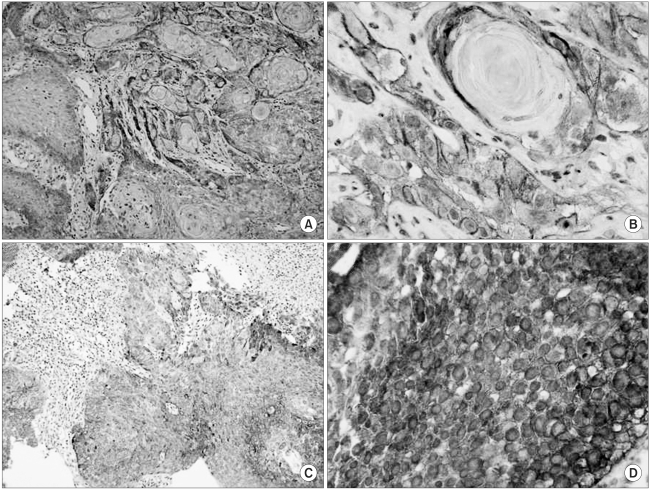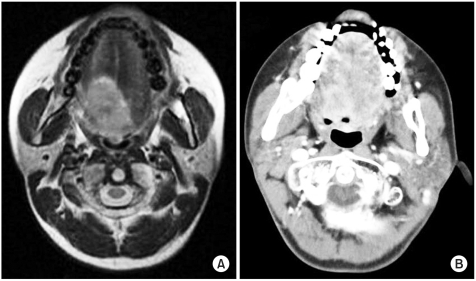INTRODUCTION
Fanconi's anemia (FA) is a rare autosomal recessive disorder that is characterized by developmental anomalies, growth retardation and progressive bone marrow failure. FA patients frequently show cytogenetic abnormalities. Recent reports support the recorded high incidence of squamous cell carcinoma in these cases, and especially for tumor in the head and neck area. However, hepatocellular carcinomas associated with anabolic steroids have also been reported in the patients suffering with FA. Although multiple primary cancers have frequently been noted in FA, there have been no suitable therapies for these cancers other than surgery. Squamous cell carcinomas and hepatocellular carcinomas that arise due to androgen therapy for aplastic anemia are the two most common solid malignancies in FA patients. Most FA patients show multi-lineage hypoplasia or aplasia, which are aggravated after treatment with radiation or such systemic chemotherapy as using the alkylating agents that cross-link DNA. Therefore, the treatment of cancers for these patients is restricted to local approaches. We report here for the first time on the use of gefitinib (Iressa™) as a trial treatment in a case of advanced multiple squamous cell carcinomas in an FA patient with hepatocellular carcinoma.
CASE REPORT
A 27-year-old woman was admitted to hospital with a palpable anal mass. She had suffered from non-severe aplastic anemia since she was six years old. One year of androgen (oxymetholone) therapy was given at the age of ten years and she had been diagnosed with type I diabetes mellitus.
The physical examination during her first admission revealed her small stature (height 141 cm, weight 30.6 kg), and she had no visible pubic or axillary hair. Further, we noted Tanner II breast buds, hypopigmented skin lesions on her trunk, a prominent vulva, and no visible uterus (Fig. 1). The hematological findings showed a hemoglobin of 11.4 g/dl, a platelet count of 38,000/mm3 and a leukocyte count of 2,600/mm3 with 40% neutrophils. Bone marrow examination revealed no abnormalities except for a hypocellular marrow (cellularity <10%); no cytogenetic abnormalities were noted.
Examination of her anal lesion showed a hyperpigmented mass on the perianal area. Biopsy of this lesion revealed invasive squamous cell carcinoma, and wide resection was performed without further treatment. Eight months later, she visited our clinic due to painful swallowing. There was a polypoid mass with central ulceration and irregular margins at the base of her tongue. Upon head magnetic resonance imaging, a 2.8×3.6×2 cm mass was found on the right side of the tongue and this extended to the left side and to the lymph nodes at both level I areas. Biopsy of the tongue mass revealed an invasive squamous cell carcinoma (stage IV A). Immunohistochemical staining for epidermal growth factor receptor (EGFR) was positive in more than 90% of the cancer tissue (Fig. 2A, B). One month later, she complained of nausea, vomiting and dysphagia. On endoscopy, there were multicentric small ulcers at the distal esophagus, and the pathology results indicated invasive squamous cell carcinoma (EGFR positivity of 30%) (Fig. 2C, D). At that time, we found a single hyperechoic hepatic mass upon abdominal ultrasonography. A 2.3 cm-sized hypervascular nodule in hepatic segment 6 was seen on a liver dynamic computed topography scan, and this lesion was defined as hepatocellular carcinoma by the liver biopsy. The serologic examination showed no hepatitis B virus surface antigen, no antibody to hepatitis C virus and a nearly normal level of alpha-fetoprotein (13.6 ng/ml with a reference range of 0~13.4 ng/ml).
We could not give systemic chemotherapy due to her underlying co-morbidity, and we treated the advanced tongue cancer with gefitinib 250 mg/day for palliation. Two months later, a computerized tomogram showed a decreased lesion size (from 2.6×3.6 cm to 1.5×1.3 cm) (Fig. 3A, B). No skin rash or diarrhea occurred during the gefitinib treatment. After cessation of the two months gefitinib trial, the tongue lesion had progressed. Transhepatic chemoembolization with 50 mg of cisplatin was then performed for obtaining local control of the hepatocellular carcinoma. After one month of that procedure, the hematological findings showed a hemoglobin of 7.4 g/dl, a platelet count of 4,000/mm3 and a leukocyte count of 1,400/mm3 with 53.2% neutrophils. The patient required transfusions of platelet and packed red blood cells. Unfortunately she was died of gastrointestinal bleeding one month later.
DISCUSSION
Fanconi's anemia (FA) is a rare autosomal recessive disorder that is characterized by several clinical features including cytogenetic abnormalities, but these were not noted in our patient. Multiple primary cancers have frequently been noted in FA; however, there have been no suitable therapies for these cancers other than surgery. Esparza and Thompson first reported head and neck squamous cell carcinomas in FA patients in 1966 (1), and co-existing squamous cell carcinoma of the tongue with hepatocellular carcinoma was first reported in an FA patient by Guy and Auslander in 1973 (2). The common locations of squamous cell carcinomas in FA are the tongue, the anogenital region, pharynx, larynx, oral mucosa, mandible and skin. A review by Lusting et al. showed that the incidence of tongue cancer in FA was as high as 69% (3). One review of literature showed up to 40 reported cases of squamous cell carcinomas that were associated with FA, and 14 of these cases involved the tongue (4). In our case, there were three squamous cell carcinomas, i.e., in the perianal area, tongue, and esophagus, as well as a concurrent hepatocellular carcinoma. From our review of the literature, it is very rare for a patient to have multiple squamous cell carcinomas and a hepatocellular carcinoma.
EGFR is expressed in many malignant tumor cells including lung, colon and breast cancers (5~7). The activation of the EGFR signaling pathway plays an important role in the growth, proliferation and survival of many tumor cells, and it contributes to resistance and refractoriness to treatment. Many molecular-targeted therapeutic agents have recently been developed, and gefitinib, which is a small molecule designed to inhibit EGFR tyrosine kinase, abrogates EGFR's function by preventing autophosphorylation and it thereby inhibits EGFR signaling (8~10). Gefitinib has shown therapeutic effects in non-small cell lung cancers and advanced head and neck cancers that are with and without EGFR expression. The first phase II study for evaluating gefitinib (500 mg/day) in patients with advanced head and neck cancer has recently been completed, and this trial showed an overall disease control rate of 53.2% with low toxicity. There are several ongoing phase II trials that are evaluating administering gefitinib at 250 mg/day for advanced head and neck cancers (11,12).
Gefitinib as a single agent has acceptable tolerability and there is evidence of its activity against advanced squamous cell carcinoma of the head and neck (11,12). We treated our patient's tongue cancer with gefitinib at 250 mg/day with a palliative aim, and we demonstrated a partial response.
The molecular markers to predict a response to gefitinib therapy have recently been shown in many solid tumors. Tumors with an increased EGFR gene copy number and increased gene mutations have shown an increased response to therapy, and some reports have shown a role for an increased HER2 gene copy number (13~15). Future studies of these markers will lead to true molecular-targeted therapy, making tailored therapy possible in any patient.
In summary, gefitinib is a safe and effective therapeutic modality, without severe toxicity, and it is suitable for FA patients with advanced squamous cell carcinoma. This is the first report of performing molecular-targeted therapy for multiple advanced squamous cell carcinomas in an FA patient with using gefitinib.














